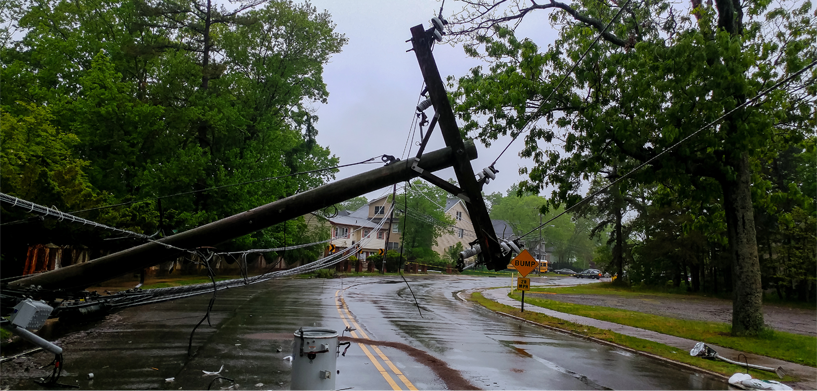When responding to an emergency or even a routine, daily event, the work of one city or regional department inevitably impacts the work other departments are doing. A shared understanding of the statuses and workflows of these departments can help cities and regions run more smoothly and efficiently.
Setting the scene
Here, we will consider how a collaborative environment could impact a major utility repair needed in the aftermath of a traffic collision.
Automobile crashes are unfortunate constants. In fact, in its Traffic Safety Facts 2019 report, released this year, the United States Department of Transportation National Highway Traffic Safety Administration reported approximately 6.8 million crashes across the country. It said about 71% of those crashes resulted in property damage.
Crashes happen in cities, on highways and in rural areas. For the purposes of this post, we will imagine this scenario playing out in an unincorporated, rural area in the U.S. served by an electric cooperative, regional emergency medical services (EMS) and a sheriff’s office.
It’s late at night, and the driver of a truck traveling a county road loses control, striking a power pole atop which sits a transformer that is damaged when the pole hits the ground. Not only does the driver need medical attention, but the power outage caused by the collision impacts a nearby housing development and small, regional medical center.
The scenario in action
A 911 call is placed, and a regional EMS unit is the first to respond, focusing — rightly — on the driver of the vehicle, while a sheriff’s deputy arrives to detour traffic. Meanwhile, the power outage is causing disruptions in homes and in the medical center. The 911 operator begins the manual process of notifying the electric cooperative, which in turn must communicate with its residential and health care customers.
Imagine how much more efficient this notification and emergency response process could be if all regional services in the area shared a common, collaborative workspace such as HxGN Connect. Notifications of outages could be sent automatically to utility providers, initiating a timelier response in such a critical situation. With HxGN Connect, utility companies can track their assets in real time to detect and respond to issues immediately, bridge siloed systems within the utility and link the utility to external organizations — in this case public safety — for shared awareness when responding to incidents.
Collaboration makes the difference
Critical infrastructure organizations need to coordinate operations with internal and external systems to ensure continuity of service and safety. They require secure access to multiple data sources, the ability to view the location of important assets and resources of collaborating organizations in a common operating picture, disaster response management capabilities and the tools to collaborate with emergency services, public works and other utility providers.
Using a real-time shared collaboration space like HxGN Connect, organizations can access integrated data from disparate systems and sensors (e.g., public safety dispatch systems, traffic and security cameras and utility advanced distribution management systems) and have a map-centric portal to display network operations and data from other organizations. True collaboration enables coordinated action and allows for critical incidents to be addressed and services to be restored more efficiently.
It’s not just about emergencies, however. HxGN Connect can be used for ad hoc collaboration between departments in a single organization or for ongoing, structured engagement across multiple organizations in a community or region. For example, in critical infrastructure industries like utilities and communications, it can be used for coordination of a mobile workforce for day-to-day projects, or for working alongside public works organizations that are doing construction and need to install power lines.
Learn more
Are you ready to reimagine collaboration? Contact us to find out more about HxGN Connect.
Enjoy this post? Subscribe to our blog and have industry insights delivered right to your inbox each week. Subscribe now.















